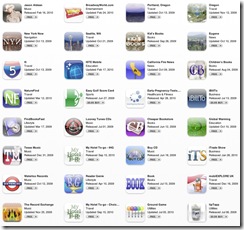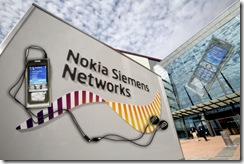In the past five years the case for outsourcing certain processes and management of network elements has been accepted as a viable cost management and efficiency driver. However, what still remains unclear is the most effective way to measure when such gains are maximised, and when diminishing returns begin to manifest, and how to redress the situation
Outsourcing balance
April 30th, 2011 — Issue 25 April 2011

Open for business
April 30th, 2011 — Issue 25 April 2011
Like so many other disruptions Apple has brought to telecom, the success of its mobile app store has grown to become the envy of network providers. If there is an example of how service providers can be relegated to the position of access provider with little-to-no participation in the high margin applications that are being bought and sold over the network, it is the mobile app store

One subscriber at a time
April 30th, 2011 — Issue 25 April 2011
Deepening of the competitive landscape in Afghanistan over the past few years has meant that Roshan has had to work harder to stake its claim to be the country’s most popular mobile provider. Roshan CEO Karim Khoja describes how customer retention is the absolute name of the game and how satisfying a subscriber at a time is likely to keep the operator in pole position
Khoja intends to keep Roshan ticking over through a combination of tight cost control and churn-limiting strategies

NSN completes acquisition of Motorola’s Networks assets
April 29th, 2011 — News
Nokia Siemens Networks (NSN) and Motorola Solutions jointly announced that NSN has completed its acquisition of Motorola Solutions’ Networks assets paying US$975 million in cash. As of April 30 2011, responsibility for supporting customers of Motorola Solutions’ GSM, CDMA, WCDMA, WiMAX and LTE products and services transfers to Nokia Siemens Networks.
“The people, customers and technology we’ve acquired greatly complement our existing business by taking us into new markets and broadening our market share,” said Rajeev Suri, CEO of NSN. “Our combined knowledge and experience will provide our newly expanded customer base with the means to grow by providing greater value to their subscribers.”
“Motorola Solutions is pleased to complete this transaction to combine our Networks team with an industry leader,” said Greg Brown, president and CEO, Motorola Solutions. “This is great news for our customers, our investors and our people and will allow Motorola Solutions to further sharpen our strategic focus on providing mission-critical solutions for our government and enterprise customers."
Based on revenue, the addition of Motorola Solutions’ Networks assets makes NSN the third largest wireless infrastructure vendor in the US and the leading non-Japanese wireless vendor in Japan. In addition, the acquisition reinforces NSN’s position as the world’s second largest wireless infrastructure and services provider.
As part of the deal, responsibility for supporting 50 operators across 52 countries, as well as approximately 6,900 employees, will transfer to NSN. In addition, NSN is acquiring a number of research and development facilities including sites in the US, China, Russia, India and the UK.
NSN has been hugely frustrated in its attempt to acquire Motorola’s Networks assets, having initially given guidance that it expected the transaction to have closed by the end of 2010. However, the transaction did not receive regulatory approval from the Anti-Monopoly Bureau of the Ministry of Commerce of China, with reports surfacing last month that NSN was seeking to renegotiate the terms of its US$1.2 billion acquisition.
One suggestion had been that NSN would exclude Motorola’s GSM unit from the acquisition and renegotiate the price accordingly in order to win antitrust approval by the Chinese government.

Motorola Mobility narrows losses in Q1
April 29th, 2011 — News
Motorola Mobility says first-quarter revenues rose by 22 per cent to US$3 billion, and net loss shrank to US$81 million from US$212 million a year ago.
In the quarter, the company generated US$107 million in operating cash flow, its seventh consecutive quarter of positive cash generation. Total cash of US$3.3 billion at the end of the quarter includes cash, cash equivalents and cash deposits.
"In the first quarter, we reached a major milestone in our history by becoming a new independent, public company,” commented Sanjay Jha, chairman and chief executive officer, Motorola Mobility. “We enhanced our product portfolio by delivering compelling experiences with the launch of Motorola ATRIX and Motorola XOOM, as well as offering unique end-to-end video solutions for the home."
Mobile Devices net revenues in the first quarter were US$2.1 billion, up 30 per cent compared with the year-ago quarter. The GAAP operating loss was $89 million compared to an operating loss of US$192 million in the year-ago quarter.
Motorola Mobility shipped a total of 9.3 million mobile devices, including 4.1 million smartphones and more than 250,000 Motorola XOOM tablets in the quarter to end-March. In comparison, Motorola Mobility shipped 8.5 million mobile devices, including 2.3 million smartphones in Q110.
The company’s outlook for the second quarter of 2011 is for a net profit of up to US$35 million, or at least breakeven.



